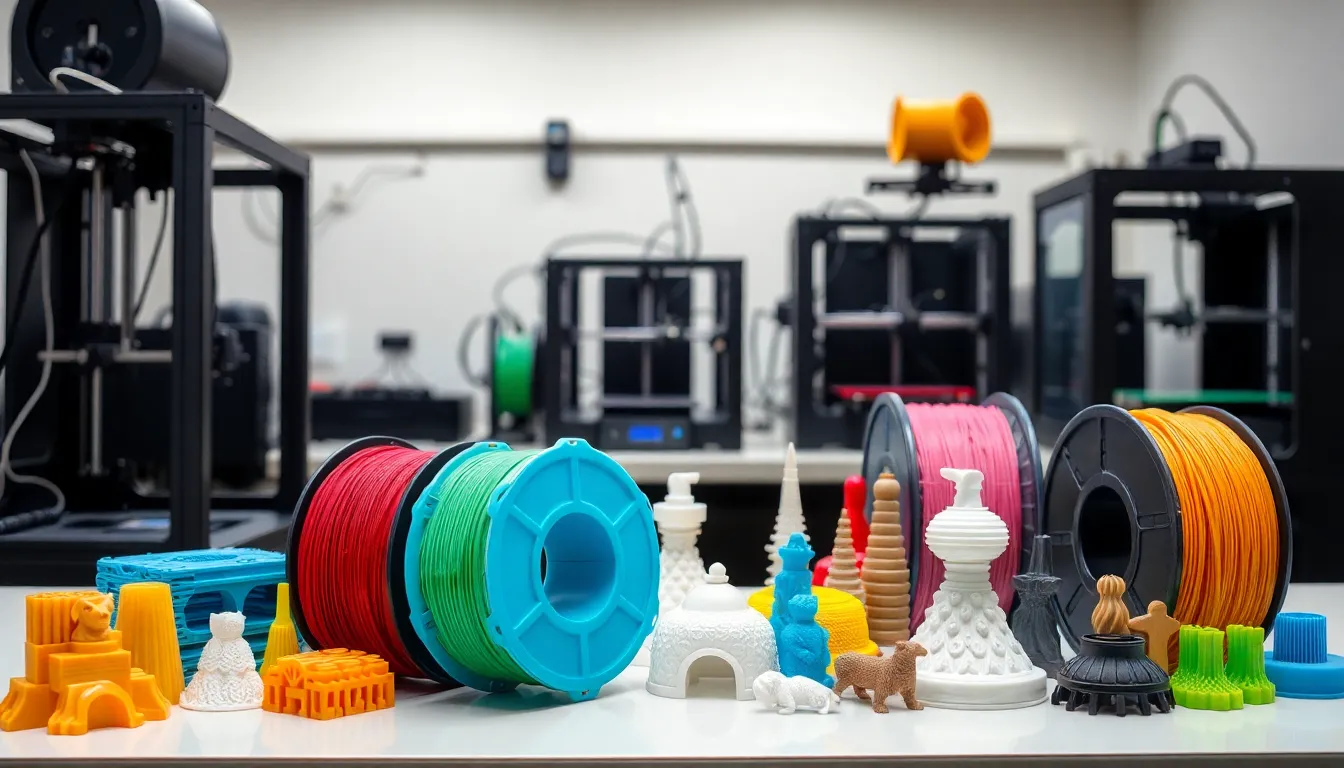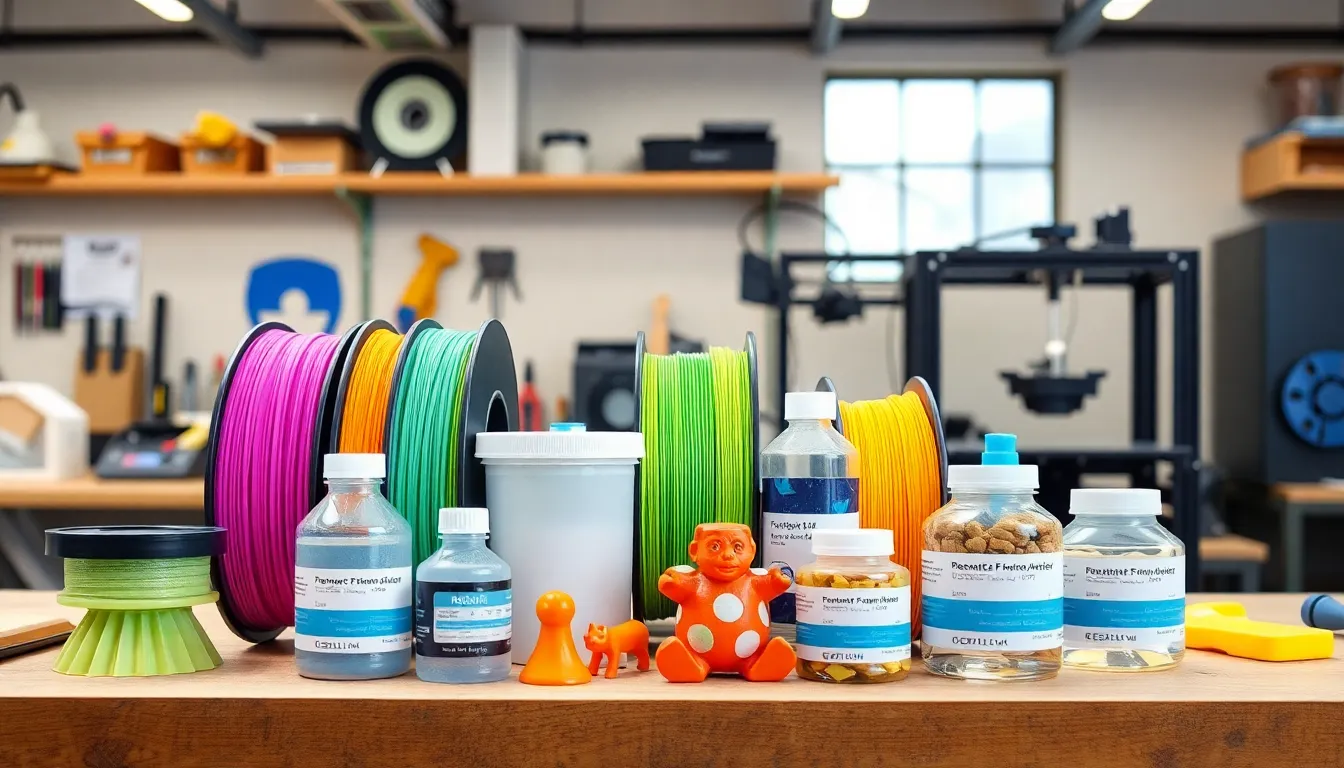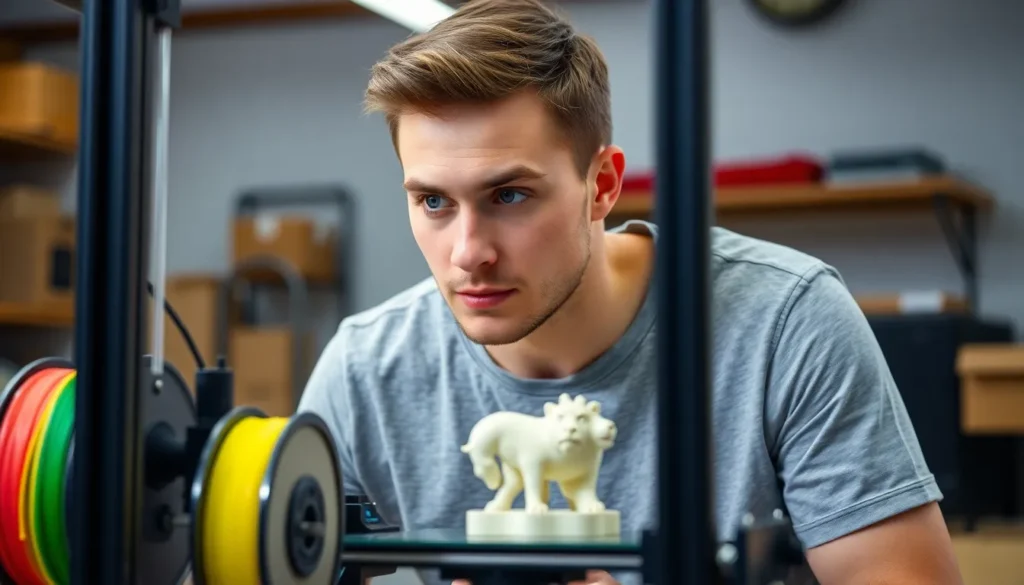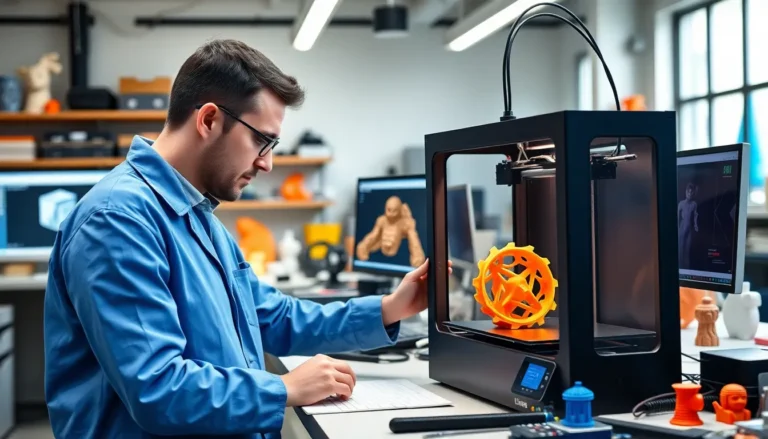Table of Contents
ToggleIn a world where everything seems to come with a price tag that could make your wallet weep, 3D printing stands out as a fascinating yet often misunderstood technology. Curious about how much it’ll set you back? Well, grab your favorite snack and settle in because this isn’t just about numbers—it’s about unleashing your inner inventor without breaking the bank.
Understanding 3D Printing Costs
Grasping the costs associated with 3D printing involves understanding both initial investments and ongoing expenses. This section provides insight into these financial aspects.
Initial Investment
Initial investments for 3D printing vary significantly based on the printer type and intended use. A hobbyist printer can start at around $200, while professional-grade machines may cost over $6,000. Factors influencing costs include print quality, print volume, and material compatibility. Printer features such as heated beds or multi-material capabilities can increase price further. Buyers should also consider software costs, typically ranging from free applications to subscriptions that can exceed $1,500 annually. Education and training resources might add to the upfront cost, depending on one’s expertise in the field.
Running Costs
Running costs involve materials, maintenance, and energy consumption. Filaments, essential for printing, can cost between $20 and $50 per kilogram, influencing project budgets significantly. Additionally, resin for SLA printers may vary from $30 to $150 for a liter. Regular maintenance ensures optimal printer performance; therefore, annual expenses from replacement parts or service contracts can range from $100 to $500. Electricity usage while printing contributes to overall expenses, with an average small printer consuming around 50 watts. Understanding each cost category aids in maintaining financial control during 3D printing projects.
Factors Affecting 3D Printing Costs


Various elements influence the costs associated with 3D printing. Understanding these factors helps in evaluating total expenses accurately.
Materials
Materials play a crucial role in 3D printing costs. Filament prices range from $20 to $50 per kilogram, depending on type and quality. For resin-based printers, costs vary significantly, with prices between $30 and $150 per liter. Quality materials often yield better print outcomes but at a higher expense. Specialty materials, such as high-temperature filaments or flexible resins, typically increase costs further. Choosing the right material can significantly impact project budget and print results.
Equipment
Equipment costs dominate initial investments in 3D printing. Hobbyist printers start around $200, while professional machines can exceed $6,000. Features such as print quality, speed, and material compatibility heavily influence price variations. Maintenance requirements also differ among models, affecting long-term expense. It’s essential to consider printing volume and intended applications when selecting equipment to balance initial and ongoing costs effectively.
Labor
Labor costs are another factor that affects 3D printing expenses. Hiring skilled operators or technicians can increase overall project expenditures. If intricate designs are involved, expert assistance might be necessary to ensure quality outcomes. Cost considerations also include training personnel to operate machines proficiently. In-house capabilities can minimize reliance on external services, thus lowering long-term costs. Investing in training can enhance overall efficiency, leading to reduced labor expenses in large-scale projects.
Cost Comparison of Different 3D Printing Methods
Understanding the costs of different 3D printing methods helps individuals make informed decisions. Each method presents unique pricing structures based on materials and technology.
FDM vs. SLA
Fused Deposition Modeling (FDM) printers typically range from $200 to $6,000, depending on quality and features. Filament costs for FDM are generally between $20 and $50 per kilogram. In contrast, Stereolithography (SLA) machines can start around $1,000 and reach up to $10,000 for advanced models. SLA resin prices range from $30 to $150 per liter, significantly impacting overall project costs. Users often prefer FDM for its affordability and ease of use. SLA, known for producing smoother, high-resolution parts, justifies its higher price in specific applications.
SLS vs. DMLS
Selective Laser Sintering (SLS) systems come with a starting price around $20,000, making it a substantial investment for serious businesses. Equipment costs increase due to the need for complex machinery and powder materials, typically costing $100 to $300 per kilogram. Direct Metal Laser Sintering (DMLS) offers high precision for metal parts, but systems can exceed $100,000. The powder materials for DMLS range from $50 to $300 per kilogram, depending on the metal type. SLS suits clients needing functional prototypes and low-volume production. DMLS, however, excels in creating durable end-use metal components, justifying its hefty price tag.
Budgeting for 3D Printing Projects
Budgeting for 3D printing projects involves careful planning to manage costs effectively. Understanding initial and ongoing expenses plays a crucial role in this process.
Setting a Budget
Setting a budget starts with identifying project goals and desired outcomes. Individuals need to consider the initial investment for equipment, which can range from $200 to over $6,000, depending on machine quality. It’s important to factor in software and education expenses, as they contribute significantly to the financial commitment. Ongoing costs, such as material prices and maintenance, also require attention. For instance, filament costs can range from $20 to $50 per kilogram, while SLA resin could be $30 to $150 per liter. This comprehensive assessment aids in establishing a realistic budget.
Cost-Effective Tips
Cost-effective tips help maximize value while minimizing expenses. First, opting for FDM printers often delivers affordable printing solutions without sacrificing quality. Second, purchasing materials in bulk reduces per-unit costs, offering long-term savings. Third, utilizing open-source software often cuts down on software expenses. Fourth, learning basic maintenance skills mitigates repair costs and prolongs machine longevity. Lastly, joining online communities or local maker spaces provides valuable insights and resource-sharing opportunities. These strategies can significantly enhance budget management for 3D printing projects.





